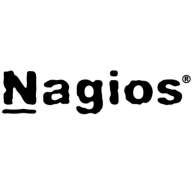

Cisco UCS Manager and Nagios Core are in the infrastructure management and monitoring category. Cisco UCS Manager seems to have the upper hand with its seamless integration capabilities, although Nagios shines with its cost-effectiveness and customization options.
Features: Cisco UCS Manager provides centralized management and facilitates configuration by unifying storage, networking, and compute resources. It supports integrating non-standard network setups. Nagios Core offers extensive monitoring across various endpoints and uses strong command structures to track faults. Its highly customizable nature makes it adaptable to specific user requirements.
Room for Improvement: Cisco UCS Manager faces challenges in upgrade and integration ease, with users looking for simpler configurations and more training resources. Users also mention the need to improve cost and complexity issues. Nagios Core could benefit from an improved user interface, making it more intuitive and user-friendly. Users desire web-based setup tools and better graphical representations to enhance accessibility.
Ease of Deployment and Customer Service: Cisco UCS Manager is typically deployed on-premises, supported by strong technical service rated positively by users. Nagios Core features flexible deployment options, including public and hybrid cloud environments, but it requires more expertise to deploy. It is appreciated for its technical support but might lack the refinement of commercial alternatives.
Pricing and ROI: Cisco UCS Manager involves a higher investment with its bundle pricing model, promising a reliable ROI through decreased hardware failure rates. Still, it's often seen as costly compared to alternatives like Dell and HP. Nagios Core, free and open-source, is advantageous in terms of initial cost but may require extra investment in cloud servers, plugins, or expert setup and maintenance hours.
I can manage all LAN uplinks and fiber channel storage uplinks directly from UCS Manager.
Cisco UCS Manager provides cost savings by reducing the time support staff spend on long deployments.
For a severity one case, a call ensures immediate assistance and resolution of the matter.
With Intersight, service requests are automatically generated, enhancing the user experience and providing timely resolutions.
Regarding Cisco tech, they are pretty good.
Adding new chassis and extra blades is streamlined.
I would rate the scalability at nine out of ten, probably.
The solution is scalable.
If there's a really complex problem, I would probably give it a ten since it gets escalated quickly.
I tried many other solutions at work, however, in terms of Nagios, I haven't seen any disruption or downtime.
We would benefit from advancements in AI that offer firmware recommendations automatically, reducing the need for human intervention and vendor communication.
When changes are pushed, it can take their phone line off the system for twenty minutes to half an hour.
While it has been improved from using Java to HTML, simplifying the tabs would enhance user experience.
Recently, we acquired an excellent bundle with significant discounts, with offers like buying three servers and getting one free, along with UCSC and fabric included for free.
As long as they can afford it, there is a setup cost involved.
It supports ease of deployment, allowing for quick mass deployments in the data center, saving time and resources by doing so from a remote location.
Whenever there's a failure of any component, it's very easy to swap because you just disassociate that profile, remove the faulty blade, connect the new blade, and associate that profile, maintaining the same MAC address and worldwide port name.
One of the valuable features is the user interface base, specifically the C user interface.
It has a very handy dashboard, providing live alerts and visibility for everything.


This is IT infrastructure monitoring's industry-standard, open-source core. Free without professional support services.
We monitor all IT Infrastructure Monitoring reviews to prevent fraudulent reviews and keep review quality high. We do not post reviews by company employees or direct competitors. We validate each review for authenticity via cross-reference with LinkedIn, and personal follow-up with the reviewer when necessary.